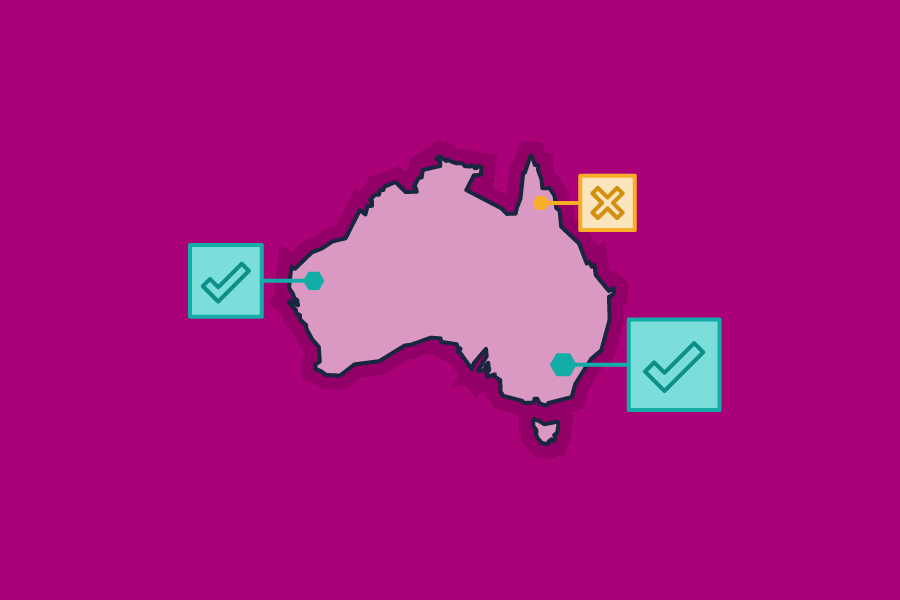Loqate utilising the (G-NAF) source of truth now includes SEIFA indices to deliver powerful socio-demographic insights

What is G-NAF?
Using the Geographical National Address File (G-NAF) geospatial data from PSMA, Loqate brings your customers into the geospatial world by tagging your addresses with the accurate spatial coordinates (latitude and longitude), regardless of spelling, presentation and other discrepancies.
PSMA’s G-NAF dataset contains all physical addresses in Australia. It is the most trusted source of foundation geocoded addresses for Australian business and government.
G-NAF is built from addresses supplied by 10 contributors including the land agencies in each state and territory of Australia. The data is then:
- independently examined and validated
- matched textually and spatially.
Over 30 million contributed addresses are distilled into more than 13.5 million G-NAF addresses.
Loqate offers a stand-alone G-NAF address validation service, or a combined G-NAF and Australia Post National Address File (PAF) address validation service. Both services now include SEIFA indices.
What is SEIFA?
SEIFA is a suite of four (4) indexes that have been created by means of social and economic information from the 2016 Census. Each SEIFA index summarises a different aspect of the socio-economic conditions in an area and ranks geographic areas across Australia in terms of their relative socio-economic advantage and disadvantage. The ABS defines socio-economic advantage and disadvantage can be defined as a person’s access to material and social resources, and their ability to participate in society.
The four (4) indexes in SEIFA 2016 are:
- Relative Socio-Economic Advantage-Disadvantage
- Relative Socio-Economic Disadvantage
- Education and Occupation
- Economic Resources
SEIFA rankings are expressed on a scale where lower numbers always mean more disadvantage and less advantage, while higher numbers mean less disadvantage and more advantage. They are standardised so that the average for Australia is always close to 1, 000.
Rankings are assigned by geographic areas, not individuals, meaning it is possible for a relatively advantaged person to reside in an area which is deemed to have a high socioeconomic disadvantage, and vice versa.
How is SEIFA used?
SEIFA is widely used by organisations, particularly at the State Government level, to allocate funding or services by ranking areas by their need. Businesses can use the indexes to assist with marketing and strategic planning. Information from the indexes will be useful for making business decisions, such as locating outlets and targeting promotion campaigns. The indexes are also useful for consumer research.
Usage Example
A luxury car brand wants to establish a new dealership to sell luxury cars in Sydney and needs some ideas about where to locate the business. The Index of Economic Resources (IER) could be used to identify Sydney suburbs with high levels of advantage. This will help pinpoint suitable localities for the dealership.
The map below shows the 2011 IER. The state suburb level (SSC) index is split into five quintiles, based on Australia-wide values. The map for Sydney is then extracted, showing some suburb names.
It can be seen that the dark blue areas would be the most likely areas considered by the car brand to establish the new dealership, to illustrate further they have been circled in black.
SEIFA attributes with Loqate
Loqate G-NAF validation now provides the perfect solution for enriching your address data with powerful socio economic insights by harnessing the Socio-Economic Indexes for Areas (SEIFA) dataset provided by the Australian Bureau of Statistics (ABS).
Whilst the SEIFA indexes are included with G-NAF, do not hesitate to speak to the Loqate team today for more information about how best to use the SEIFA attributes to increase the value of your customer addresses.